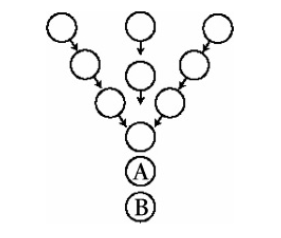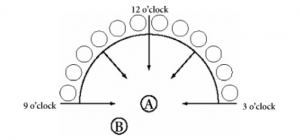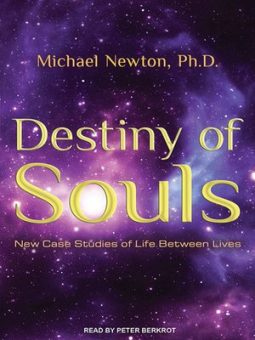Community Centers
My next case illustrates the visual associations subjects in a superconscious state bring to descriptive memories of arriving back home. It involves an identification with classical Greece, which is not unusual. I have listened to visualizations so futuristic and surreal as to allow for few comparisons with Earth. People do say to me that words cannot adequately describe the images of what they see at this junction. Once I take a client past the gateway to spaces where they begin to make contact with other spirits they become exhilarated.
In case 27 a subject, whose spiritual name is Ariani, will associate a Greek temple with her experience after death from her most immediate past life. Perhaps this is not surprising since so many of my subjects had incarnations during the time when ancient Greece brought the light of a high civilization into a dark world. In art, philosophy and government they left a legacy and a challenge for those who followed. This society sought to unite the rational with the spiritual mind, which is remembered by those clients who were part of this Golden Age. Ari-ani had her final life in ancient Greece during the second century b.c., just before Rome began its occupation.
Case 27
Dr. N: When you approach your spiritual center, Ariani, what do you see there?
S: A beautiful Greek temple with bright white marble columns.
Dr. N: Are you creating this image of a temple yourself or is someone else placing it in your mind for you?
S: It’s really there in front of me! Just as I remember it . . . but . . . someone else could be helping me . . . my guide . . . I’m not sure.
Dr. N: Is this temple familiar to you?
S: (smiling) I know it so well. It represents the culmination of a series of meaningful lives that I was not to know again for a long time on Earth.
Dr. N: Why is that? What is it about this temple that means so much to you?
S: It is a temple to Athena, goddess of wisdom. I was a priestess— with three others. Our job was to tend the flame of knowledge. The flame was on a flat, smooth rock in the center of the temple with writing etched around it.
Dr. N: What does the writing mean?
S: (pause) Ah . . . essentially . . . to seek truth above all things. And the way to seek truth is to look for harmony and beauty in that which surrounds us in life.
Dr. N: (deliberately obtuse) Well, is that all you did—just making sure the flame didn’t go out?
S: (with some exasperation) No, this was a place of learning where a woman could participate. The flame symbolized a sacred flame in our hearts for knowing truth. We held the belief in the holiness of a single god with lesser deities representing parts of that central power.
Dr. N: Are you telling me that you and the other women had monotheistic beliefs?
S: (smiling) Yes, and our sect went beyond the temple. We were seen by the authorities as being pure in heart and not as an intellectual caste. Most of them did not realize what we were about. They saw Athena in one light while we saw her in another. To us, the flame meant that reason and feeling were not opposed to one another. To us, the temple placed the mind above superstition. We also believed in equality between the sexes.
Dr. N: This kind of radical thinking could get you into a lot of trouble with a patriarchal establishment, I suppose?
S: It did, eventually. Their tolerance eroded and we had deceit and intrigue within our own ranks and then betrayal. Our motives were mistrusted. We were disbanded by a sexist state which was losing power and felt our sect was contributing to corruption within the state.
Dr. N: And after this series of lives in Greece, you wanted your temple with you in the spirit world?
S: That’s one way of putting it. To my friends and me, this life and a few earlier ones in Greece represented the high point of reason, wisdom and spirituality. I had to wait a long time before openly being able to express these feelings again in a female body.
Once I took Ariani into her temple she saw a huge rectangular gallery without a ceiling, filled with approximately 1,000 souls. These souls were a large secondary group whom she saw bunched into smaller clusters, called primary groups, made up of souls numbering from three to twenty-five. Her own cluster was midway back on the right side (see figure 1, circle A). As she made her way back, Ariani was accompanied by her guide. She then described how this entrance appears to a returning soul. This scene is one I hear repeated over and over again involving large numbers of soul groups, regardless of the structural setting. In the superconscious minds of people, these gatherings could just as well be in an amphitheater, palace courtyard, or school auditorium as in a temple.
Dr. N: Ariani, give me a sense of what it feels like to make your way through this crowd of souls to your cluster.
S: (with excitement) It’s uplifting and awesome at the same time. With my guide leading, we start to weave our way left and right between the clusters, some of whom are seated in a circle and others are standing, talking. In the early stages most people pay
Figure 1: The Great Hall Community Center

This diagram represents the first view by many people of large numbers of primary soul cluster groups which make up one big secondary group of some 1,000 souls. Primary group A is the subject’s own cluster of souls.
no attention to me because we are strangers. Souls who are nearby my path might nod their heads in polite acknowledgment of my arrival. Then, about midway through, people who see me become more animated. A man who was my lover two lives ago stands up and gives me a kiss and asks how I am doing. More people in other clusters begin now to smile and wave at me. Some whom I have known in lives only slightly give me a thumbs-up greeting. Then—as I get to a group next to my own cluster—I see my parents. They stop what they are doing and drift over the short space between our two clusters to embrace me and whisper encouragement. Finally, I reach my own group and everyone is welcoming me back.
About half of all my clients see large groups of souls upon their return. The other half report that after their arrival they see just their own cluster. The visual images of either large or small gatherings of souls can vary with the same soul after different lives. The primary group of souls, with whom we are most closely bonded, may also appear to these same subjects as people milling about in outdoor scenes of recreation, such as a countryside field of flowers.
Regardless of an exterior or interior setting, figures 2 and 3 illustrate what a majority of subjects see when they first make contact with their groups. In these instances, no other groups are observed in the area. In figure 2, the welcoming souls are rather bunched together, each soul coming forward in turn to the front position. Figure 3 shows the customary way a group forms a semicircle around the newly arrived soul. Most of my subjects experience this circular form of greeting. A descriptive representation of this practice will be found in chapter 7 with case 47.
Those subjects who report going directly into a classroom setting upon returning from a past life have a clear picture in their minds of hallways that connect a series of spaces for study. Unerringly, they seem to know in which space they belong. In these cases, cluster groups commonly stop their activities to welcome any new arrival. Figure 4 represents the usual design layout of a learning center where numerous groups of souls work. The consistency of reporting about the settings
Figure 2: Cluster Group Position 1

Figure 2 indicates the phalanx-diamond position of a primary cluster group greeting returning soul A with the group guide B behind. Here many souls are concealed behind one another before their turn to greet the incoming member.
Figure 3: Cluster Group Position 2

Figure 3 indicates the more common semicircle positioning of a soul group waiting to greet returning soul A with (or without) teacher-guide in position B. On the hands of this clock diagram, souls come forward, each in their own turn, from positions within a 180-degree arc. Typically, greeting souls do not come from behind A in the 6 o’clock position.
shown in figure 4 is astonishing. Only a very small percentage of my subjects say that their initial meeting with groups of souls involve just floating in air with nothing around. The absence of landscape scenes or physical structures does not last long, even in the minds of these people.
Pages: 1 2 3 4 5 6 7 8 9 10 11 12 13 14 15 16 17 18 19 20 21 22 23 24 25 26 27 28 29 30 31 32 33 34 35 36 37 38 39 40 41 42 43 44 45 46 47 48 49 50 51 52 53 54 55 56 57 58 59 60 61 62 63 64 65 66 67 68 69 70 71 72 73 74 75 76 77 78 79 80 81 82 83 84 85 86




